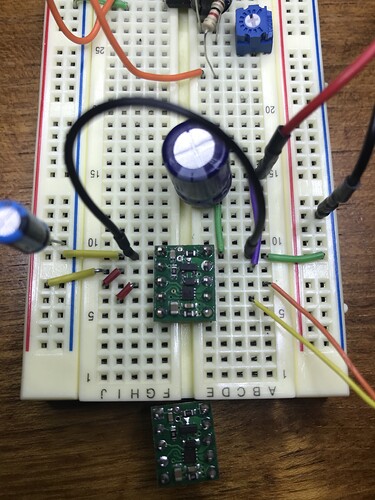Hi Pololu and friends,
I recently picked up a couple of the DRV8838 motor drivers. I wanted to use them to drive 8 ohm coils for a kind of actuator I am building (with permanent magnets moved by the coils). I have only been using voltages from 3 - 5.5V on Vin and 5V at VCC. I see a max current draw of 500mA on my power supply for the motor voltage.
I use a low frequency 0-4V square wave for the Phase as I want the coils to flip polarity back and forth (around 1Hz up to 20Hz max). Each DRV8838 started working great, but suddenly stopped all function.
I poured through the support assist and added more capacitors to my power rails and tried again, but then my second driver failed. The datasheet highlights the protection circuitry so I was feeling pretty confident about this chip. Now I am wondering what I don’t know I am doing wrong.
Here is an image of the driver with Phase and Enable tied to VCC. With 5V at both VCC and Vin (separate supplies common ground) I get 0v on both motor outputs for both drivers.
Does this chip fail if the motor wires suddenly go open circuit? I know the chip prevents overheating like from shorts, but what about an air gap at the motor outputs?
OR
Is there a max frequency at the Phase pin? For instance it can only switch direction at 3Hz or something?
Thanks for any notes or thoughts.

